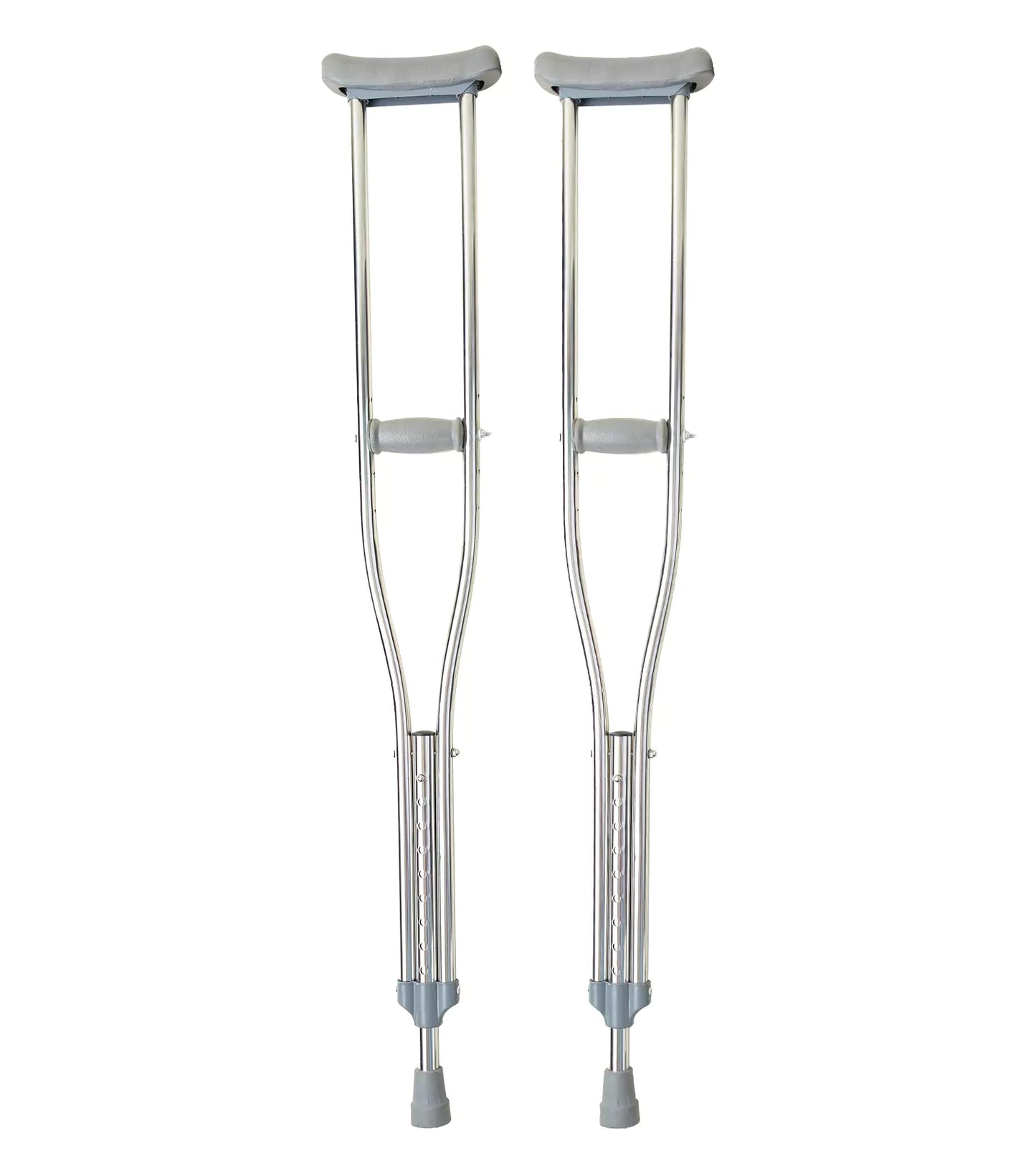
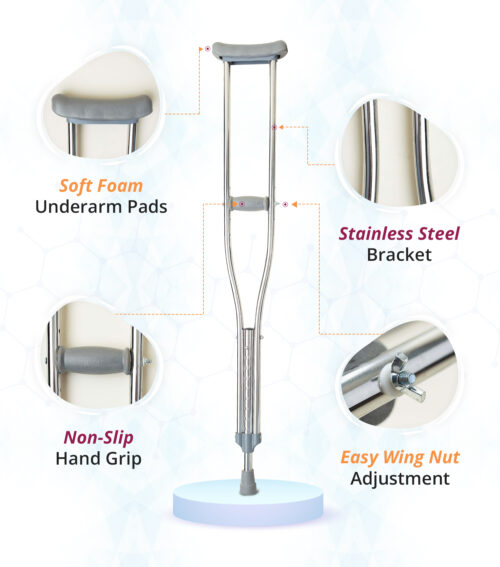
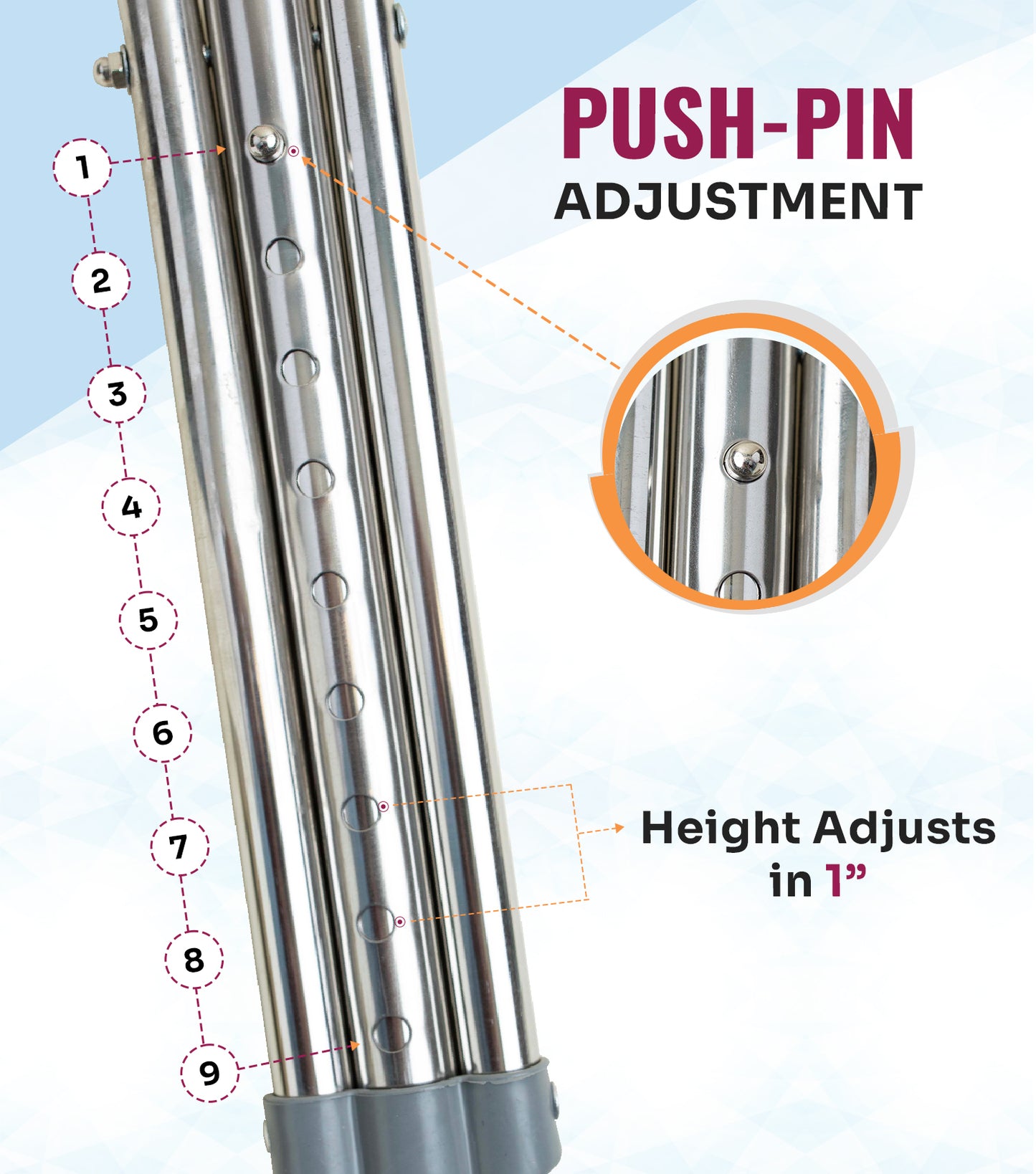
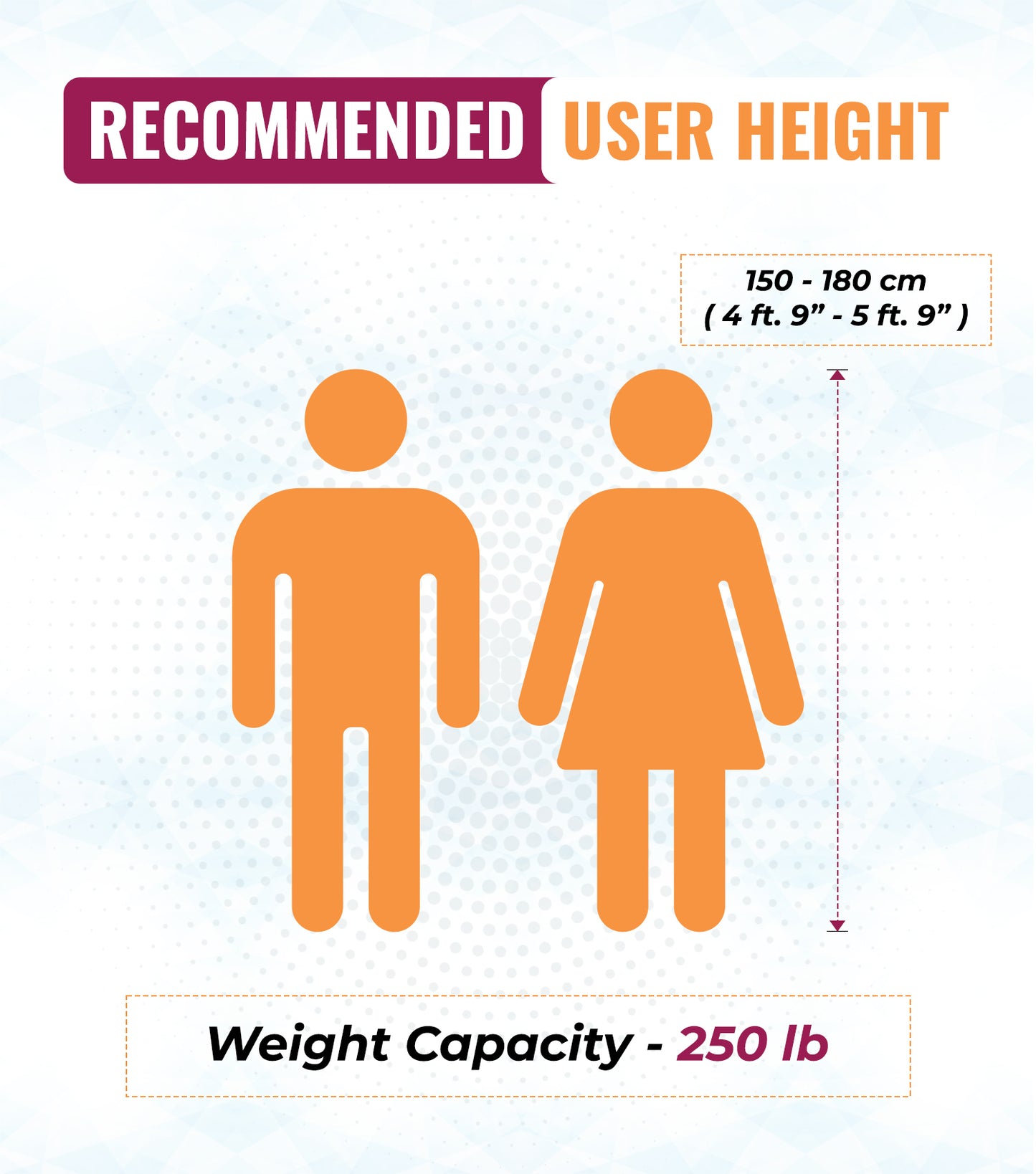
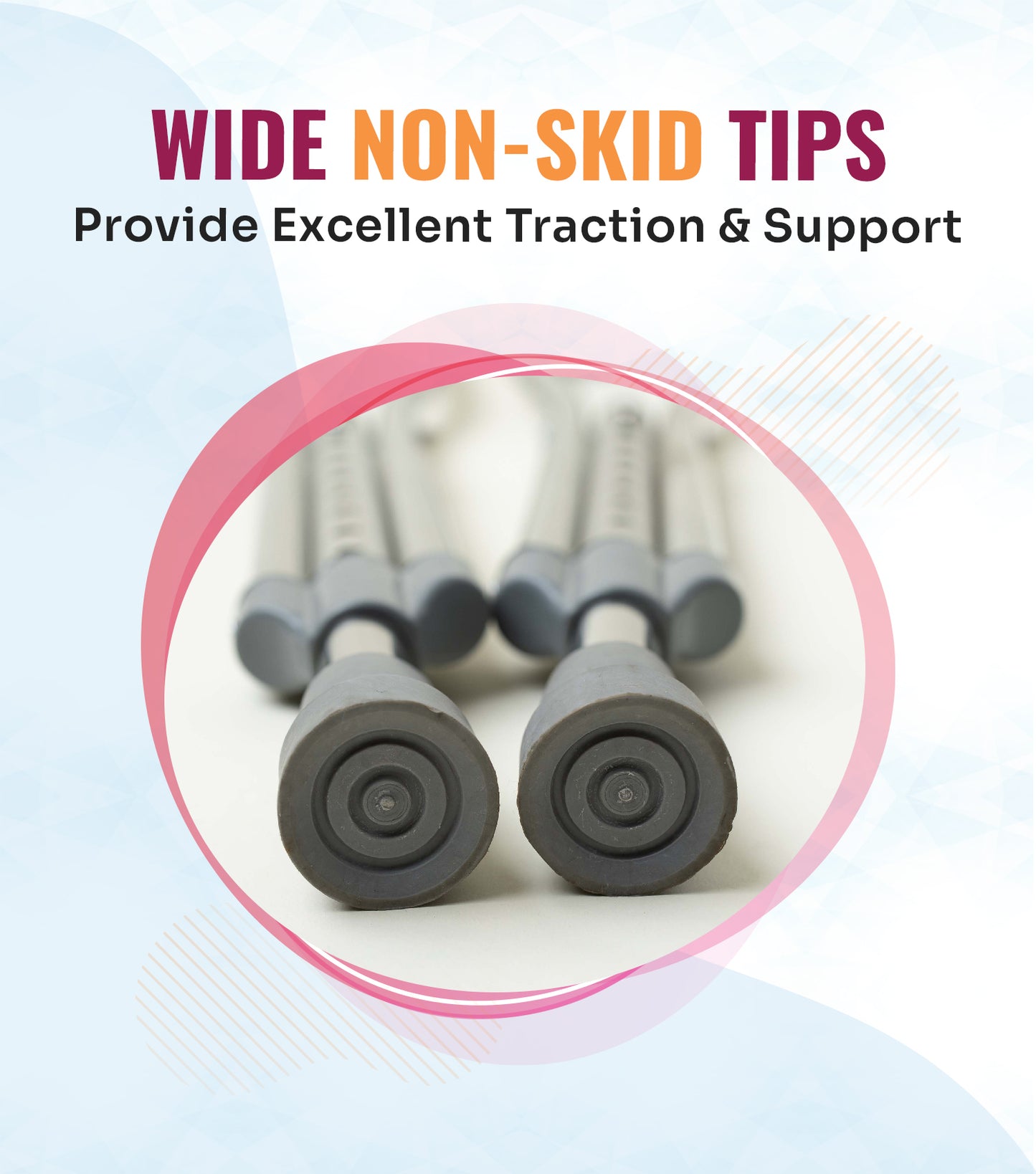
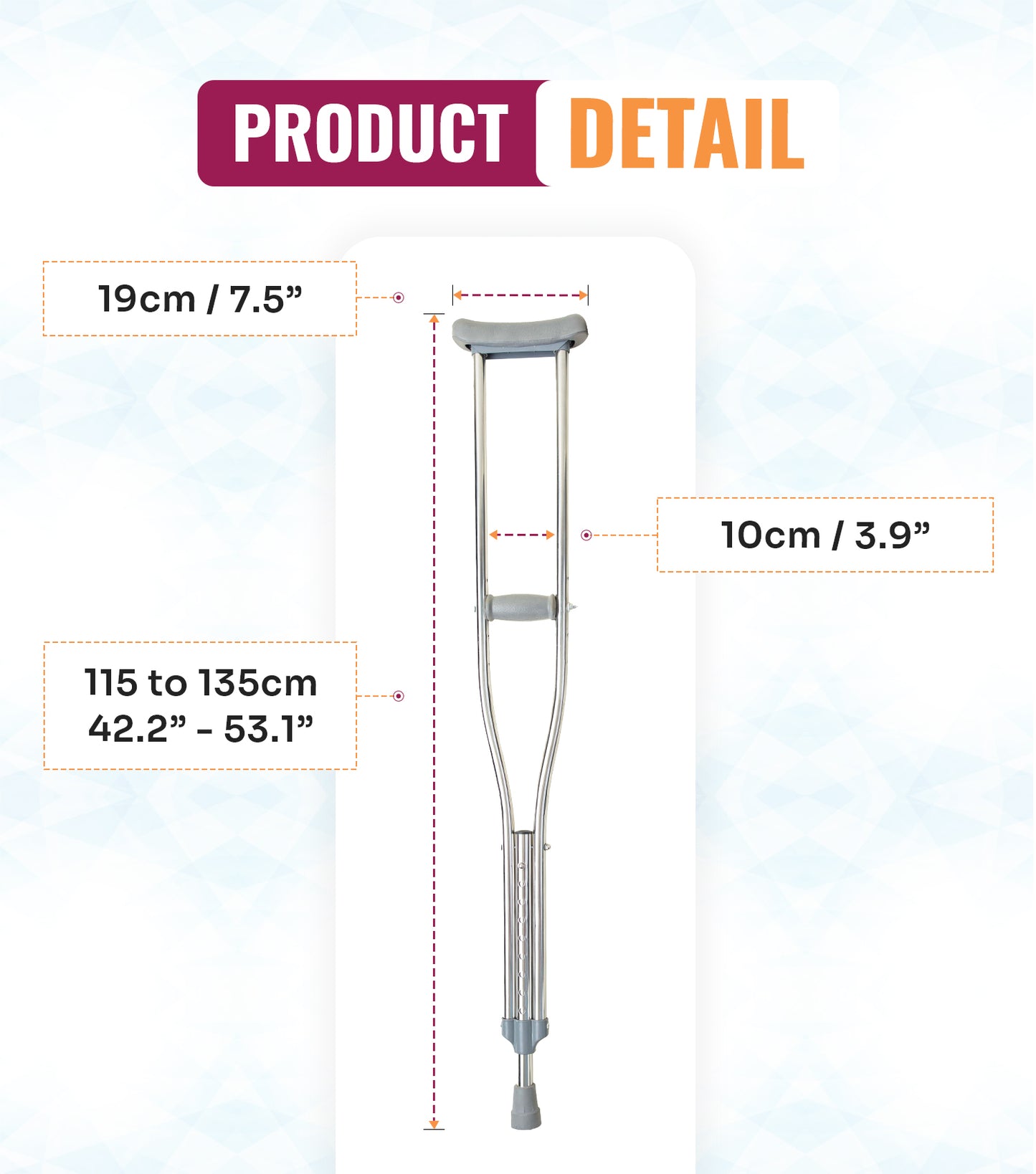
Let’s delve into further details
Shipping & Delivery
We process all orders within 2 business days For more information click here
Return & Exchange
You can return or exchange your item within 30 days of purchase. All orders within the U.S. qualify for free shipping/exchange! For more information, click here click here
FAQ
Why Choose SNUG360 Walking Crutches


Breathability and Skin Protection

Stability & Safety

Durability for Everyday Life

Fit & Adjustability

Recovery & Daily Comfort
SNUG360 crutches are equipped with padded covers and ergonomic handles which minimize pain and fatigue, enabling prolonged use without discomfort. They facilitate an easier, faster recovery while preserving your independence. Our crutches are perfect for people healing from fractures, sprains or surgeries. They assist in transferring the weight from a hurt leg to the arms and shoulders, which helps you recover and helps prevent slowing down by reducing swelling and risk of new injuries. They improve independence and day-to-day mobility by providing optimal support for walking.
-

Free Shipping in the USA
All orders over $20 within the USA are eligible for free shipping.
-

30 Days Money Back Guarantee
Don't Love It? Return It.
-

Secure Payments
Safe Transactions for Worry-Free Shopping.










